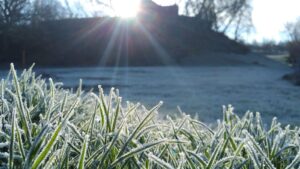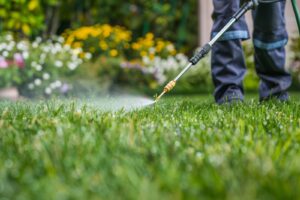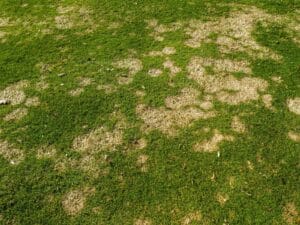With the winter months upon us, it’s time to take care of your lawn. Before you turn in for the winter, be sure that you take the needed measures to protect your lawn against cold weather conditions. When you keep your lawn maintained through the winter you are more likely to have a lush and full lawn come spring! Don’t let all of the year’s yard work go to waste. You can keep your lawn going strong with just a few winter maintenance tips.
1. Know Your Grass
The type of grass you have will determine what kind of fertilizer you need to use. There are cool season grasses and warm season grasses. These grasses react differently to the same product.
Cool season grasses include fescue, Kentucky bluegrass, and perennial ryegrass. These grasses grow strongly during fall. If you are dealing with cool season grass, you should apply winterize fertilizer in October or November for your grass to keep its strength going through the winter.
Warm season grasses include Bermuda, centipede, St Augustine, and zoysia. Unlike cool season grasses, you should not fertilize warm-season grasses after August. If you do, you’ll risk new growth that will be damaged over the winter.
2. Mow
As the weather cools down, cut down your grass with it. Your lawn should be at about 1 to 1 1/2 inches (the recommended length may differ based on your type of grass) as winter hits. With a short lawn, your grass will be better able to protect itself during the cold and reduce any chances of fungus growth. Grass will not grow much over the winter as all the nutrients will go to their roots.
3. Aerate
After cutting down your lawn, it’s a great time to aerate it. This is very important to a healthy lawn for the winter. Lawn aeration allows roots to grow deeply, in the winter plants tend to put all of their energy into their roots to remain strong during the cold weather. Winter dormancy happens when your grass stops growing and sends all its nutrients to its roots. This allows the grass to grow stronger to stay alive through extreme weather but does not produce visual growth.
4. Fertilize
To help your lawn return healthy and lush when spring comes around, add a little fertilizer. The type and amount of fertilizer that will serve you best should be determined by the type of grass you have and a soil test. Fertilizer should be distributed evenly throughout your lawn.
5. Reduce (or Stop) Irrigation
In the cold season, you may not need to water your glass at all. Many people make the mistake of clearing snow off of their lawn. But snow can actually help to protect your grass from extreme temperatures. The snow will preserve your grass.
If you do live in a warmer climate, you may need to water your lawn, but you should reduce watering. Excessive watering in cold areas can lead to flooding and icy patches.






